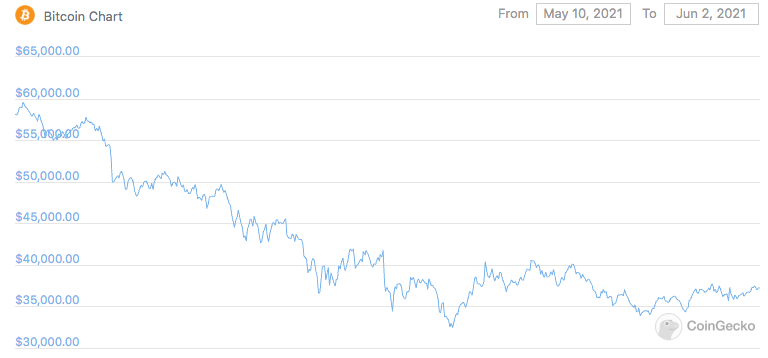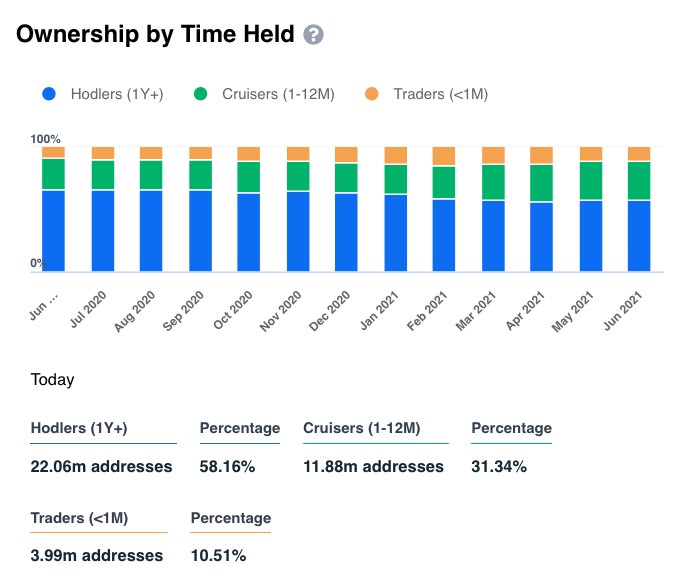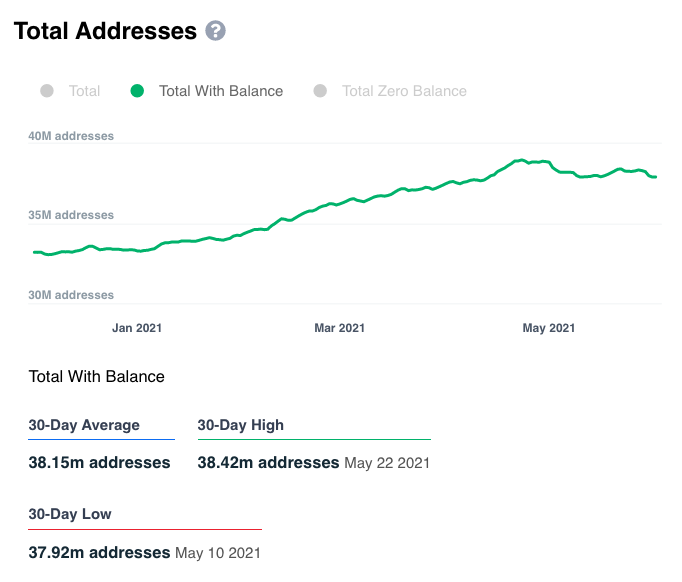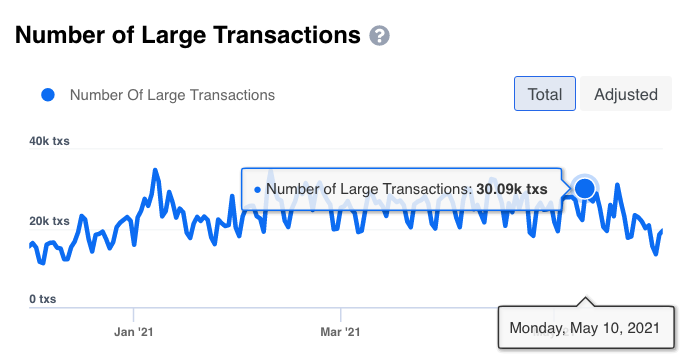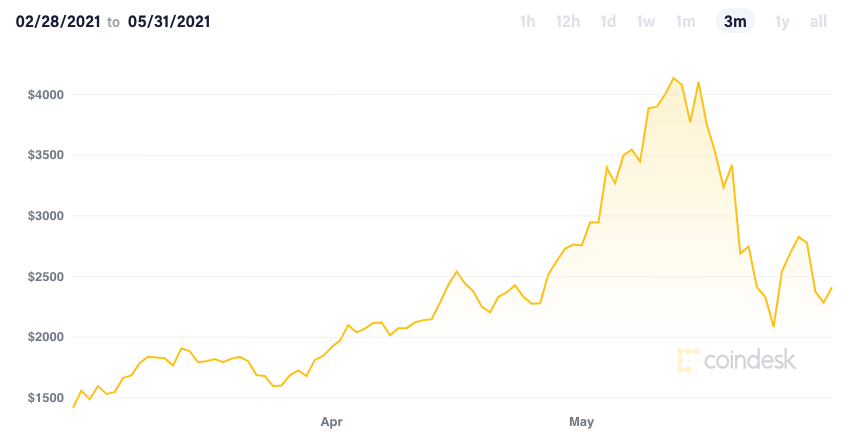In the wake of confusing comments and advice from state and nonstate actors alike, BTC has lost 25% of its market value in just a few hours, then suddenly regained it. Shortly thereafter it entered a more sustained slide, from near-peak prices to sums not seen since the end of last year.
But why did this happen, what’s really driving these changes in valuation, and what do they mean for the digital assets space?
The Treasury Department announces stricter regulation
Let’s start with the US Treasury department, which on May 20 2021 called for stricter reporting standards for digital assets transactions. “Cryptocurrency already poses a significant detection problem by facilitating illegal activity broadly including tax evasion”, the Treasury Department said in a press release. The new guidance calls for transactions over $10,000 to be reported to the IRS, pulling digital assets transactions into line with cash transactions.
The changes, and increased scrutiny on digital assets transactions, are part of a pivot toward stiffer tax enforcement in the US. A bill, the “Restoring the IRS Act”, proposed by Senator Elizabeth Warren, aims to create “a stronger IRS armed with more complete information and the ability to assert increased penalties [that] will generate additional tax revenue by reducing the ‘tax gap’” estimated by the Treasury Department at “roughly equal to 15% of taxes owed”.
But this announcement came too late to have triggered the plunge that saw BTC fall to $34,000 on May 23 — just 58% of its May 8 value. (It probably helped, though.)
A more likely culprit is the corporate treasury of electric car manufacturer Tesla, whose CEO Elon Musk is ambivalent on BTC, but loudly so.
The Elon Musk effect
Musk, famously outspoken, ambitious and filter-free, had previously been enthusiastic about Bitcoin. Tesla moved $1.5 billion of its corporate treasury into BTC, helping to send Bitcoin’s market cap past the $1 trillion mark for the first time. But it also spelled trouble for Tesla.
In theory, Tesla’s choice of BTC as a store of treasury value makes sense. Liquidating BTC takes less time than transferring cash internationally by conventional means, so it should both allow Tesla to earn a return on its treasury and provide cash in a range of fiat currencies more or less on demand.
But many analysts don’t see it that way. Apple’s corporate treasury is mostly in stocks and bonds; but these are regarded by analysts as sufficiently liquid, because they’re in regulated markets. Tesla’s BTC are not, so Standard and Poor and other analysts see them as insufficiently liquid to be counted as cash.
“We believe investments should be able to be quickly liquidated and not require deep discounts. In the case of bitcoin, this is directly linked to the available market to quickly sell large volumes of bitcoin combined with the volatility risk in today’s environment”, S&P analysts wrote in a note. Because of this, they don’t believe BTC should be offset against debt on a corporate balance sheet the same way cash is.
Leaving aside for the moment the question of whether S&P’s analysts are right about how BTC works, there’s more to Tesla’s involvement. After jumping in with both feet on BTC, Tesla first announced that it would be accepting BTC as payment for its cars, then backtracked.
In March, the company said paying with digital assets would be an option for Tesla purchasers, and did accept some payments in BTC. In May, Musk tweeted that Tesla would no longer take BTC as payment, citing concerns about “rapidly increasing use of fossil fuels for Bitcoin mining and transactions, especially coal, which has the worst emissions of any fuel”.
Musk went on to say that Tesla would not be selling any of its BTC but would wait “until mining transitions to more sustainable energy”, while also looking into alternative digital assets that “use more than 1% of Bitcoin’s energy/transaction” — likely a nod to PoS blockchains that don’t rely on mining to mint new blocks.
Mining and power
While it’s true that Bitcoin sucks down power to mint new blocks because its PoW consensus algorithm is inefficient (by design), it’s also possible to overstate the case. Bitcoin miners tend to congregate at a sweet spot where both electricity and land are cheap, but secure. For a decade, that’s meant China, much of whose electricity indeed comes from coal.
But one Chinese province has ejected its Bitcoin miners and others are likely to follow. China’s plans to move to a CBDC don’t include a place for Bitcoin. And if Bitcoin mining concerns move to countries where electricity is greener, Bitcoin will itself become greener. And in much of the world the transition to renewable energy is already apace; the withdrawal of major institutional investors from big fossil fuel conglomerates isn’t the only sign, but it’s a pretty clear one.
It’s also worth pointing out that none of this is news. BTC (and Ether, and every other PoW chain) rely on having enough electricity available to power large arrays of chips to do the Work that constitutes the Proof. Elon Musk’s announcement may have moved a coalition of Bitcoin miners to announce an initiative to make Bitcoin mining greener. It wasn’t news. So why did it make Bitcoin lose so much apparent value?
Supply, demand and elasticity
Bitcoin’s value is based on supply and demand. When more buyers want it the price rises, when fewer do, the price falls. That’s true of all assets. This is “elasticity of demand” (demand can change). But with some assets, there’s also “elasticity of supply”. When Levi’s find burgeoning demand for their jeans, they usually make more pairs rather than let the price rise to $500 a pair. When a company’s shares are in great demand, it’s not unusual to issue more of them.
Bitcoin can’t do that. It’s closer to being like gold, whose supply is relatively inelastic. But occasionally, new gold deposits are found, or new, more economic ways to extract gold from known ores. Bitcoin’s supply is limited, by the same cryptographic rules that allow it to exist at all, to 21 million BTC. There will not and cannot ever be any more BTC than this. So price changes are solely down to demand fluctuation.
Where was the demand fluctuation that slashed BTC’s value? Bitcoin continues to attract new retail investors. The reasons are obvious. Growth can be extremely rapid and while there have been major slumps in BTC value, overall it has grown extremely fast. If you had invested $2,000 in a single Bitcoin in 2017, you’d have $36,000 today — 18 times your initial investment in four years. Most mainstream investment opportunities struggle to hit 4.5% per year, let alone 4.5X.
But many of these investors, like all retail investors, are using money they don’t feel they can afford to lose. When values start to tumble, they pull out. And that’s what’s happening with BTC’s price tumble. New retail investors who haven’t invested in BTC before, and who often haven’t invested before, are rescuing their pot before it’s gone for good. They can see the same graphs as you and me, but institutional investors think in terms of years and yields; retail investors don’t. A rally five years down the line isn’t a safe enough bet.
We can see this play out through BTC explorers.
Here’s the price of BTC in USD over the last month:
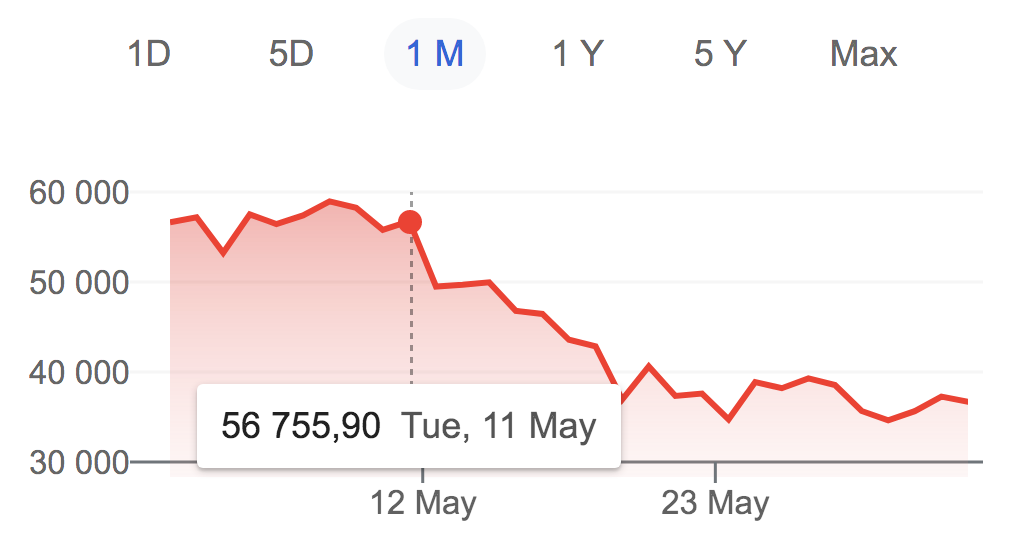 Source
Source
From May 11, the price fell sharply — from $56,755 to $49,498 the next day. At the same time, the proportion of smaller wallets holding BTC grew:
The long-term trend for the last year has been gradual growth in the number of short-term, small-quantity wallets holding their BTC for less than a month. At the same time, the number of wallets has grown rapidly:
But there’s a drop-off toward the end of May, mirroring the fall in BTC prices; on May 10, the day before the slump began, the number of new addresses fell to a 30-day low. This was happening at the same time as the proportion of short-term wallets reached a one-year high, and the same time that the number of large transactions fell, gradually, to its January 2021 level.
Right at the same time as retail investors were taking dollars out of BTC, institutional investors were taking BTC out of exchanges and putting it in cold storage. Their confidence that now is a great time to trade Bitcoin may be low, but (like Tesla) they’re obviously confident that now is a good time to own BTC.
Large-scale, long-term wallets aren’t quitting
The slump in BTC value seems likely to be short-lived and superficial; Musk might be involved in some type of internal Tesla politics, or he might be expressing genuine environmental concerns about something he got involved in without knowing all the facts — something that would hardly be out of character. It’s even possible he’s trolling the market in some way, though there’s no concrete reason to think so.
But he isn’t ditching Tesla’s BTC, and neither are most of the businesses that hold large quantities of BTC. Last time Bitcoin’s value slumped like this, in January 2021, the recovery took BTC to a new $57,000 peak; it never dipped below $45,000 again until now, and prices are once again recovering at the time of writing.
It’s also worth looking at the market share BTC has. BTC is the first choice for many digital assets investors because it has demonstrated strong growth and is well-served by onramps and exchanges. But it’s not the only choice. As other digital assets come to the fore, BTC’s market share necessarily falls. It was 70% at the end of last year, and much of the difference has been accounted for by a rise in Ether prices:
Ether hit a record $3,000 market cap May 3 this year, when BTC’s previously-dominant market share fell to 46%; it’s 40.23% at the time of writing. The chart above shows Ether’s price doing what it normally does — tracking BTC. But it’s doing so in a way that can easily conceal the fact that its value has grown at over three times the pace of BTC’s in the last year. Ether and other second-tier coins are absorbing a lot of the investment that might once have gone to BTC.

